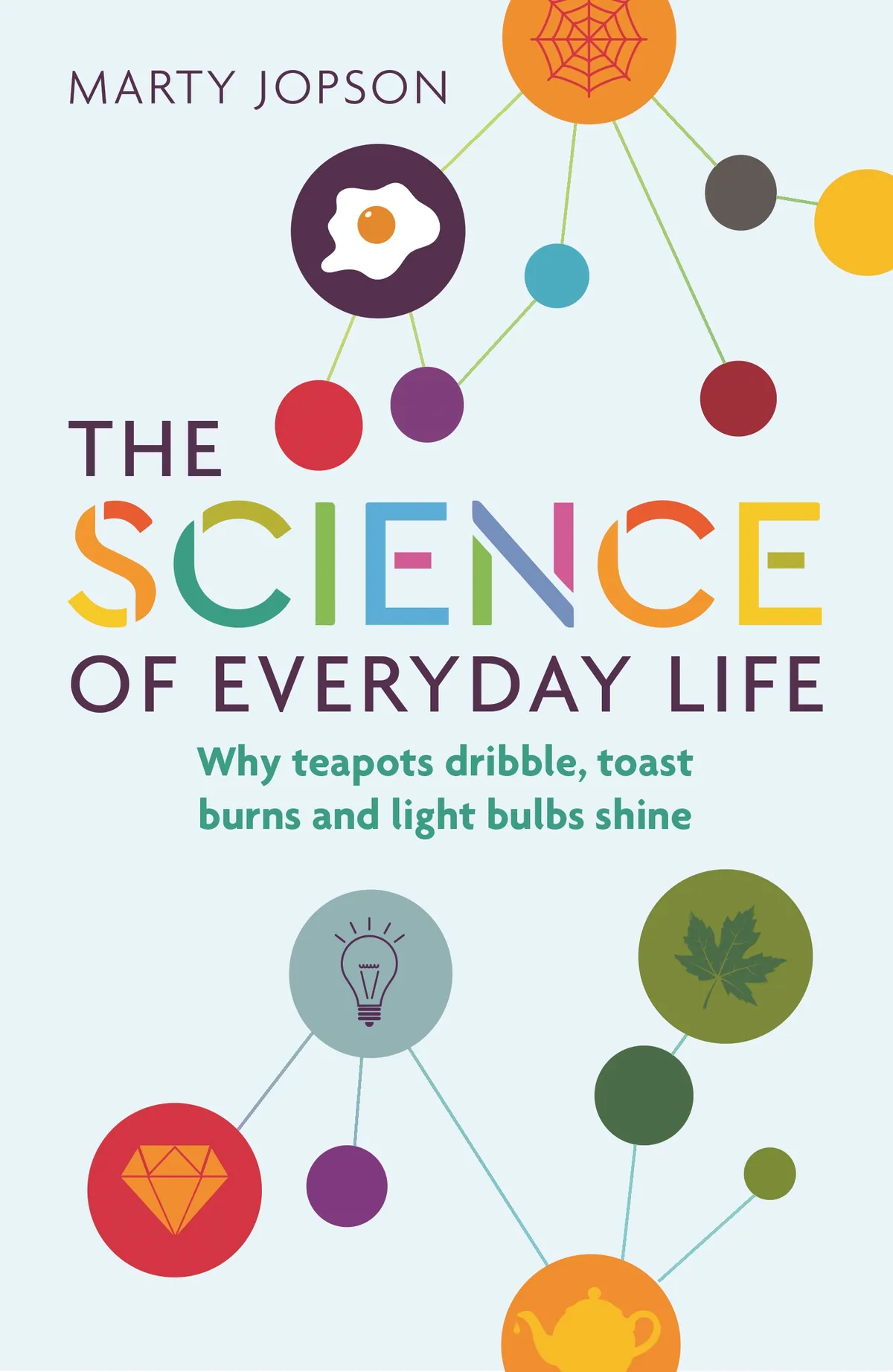1
Microwave
First up, lets clear away the big microwave misconception: they don’t cook from the inside-out. Microwave ovens cook in pretty much the same way as your ordinary oven, from the outside-in. Although it must be said that the energy they use penetrates much deeper than in a regular oven.
This energy comes in the form of electromagnetic waves, like light or radio, except these waves are 12.2 cm from peak to peak. As the name electromagnetic suggests, some of this wave consist of an electric charge varying from positive then back to negative.
So, take a left-over curry for example, pop it in the microwave and give it a three minutes blast. As the electromagnetic waves penetrate your curry any molecules that have a positive or negative charge are forced to move themselves to align to the charge of the waves. This includes any water molecules, but also proteins, carbohydrates, sugars, and pretty much all the molecules in the curry. Since the electromagnetic charge is flipping from positive to negative, the molecules also have to flip from side to side.
The result is that the microwaves cause the charged curry molecules to jiggle about furiously. Since temperature of a material is determined by the average amount of movement in the constituent molecules, the left over curry heats up. At least, the outside couple of centimetres of curry heats up, which is why you need to give it a stir half way through to get it properly hot.
2
Quartz clock
Stamped on the dial of most battery powered clocks is the word quartz. In the heart of these clocks are slivers of quartz, a material with a peculiar property. If you attach it to a battery, so that there is voltage across it, the quartz slightly changes shape. Remove the voltage and the quartz returns to its original shape releasing a tiny pulse of electricity.
The quartz in your clocks is precisely laser-cut into tuning fork shapes two millimetres long and half a millimetre wide. When attached to a battery the tuning fork flexes slightly. Remove the battery and the tuning fork relaxes and releases a pulse of electricity - now the clever bit - feed this pulse back into the quartz. The tuning fork flexes again, relaxes and emits another pulse of electricity. As long as there is continued input from the battery the quartz vibrates until it reaches its natural resonant frequency of 32,768 vibrations and pulses of electricity per second.
Mathematically astute readers will recognise this number as being two multiplied by itself 15 times. Also inside a quartz clock is as electronic dividing circuit that takes-in pulses of electricity and outputs exactly half the number. Feed the pulses of electricity coming from the quartz through this dividing circuit 15 times and you end up with exactly one pulse of electricity per second. Now use this single pulse per second to drive a tiny motor and you get the tick of a quartz clock, accurately counting seconds.
3
Toaster
What makes a toaster toast is a simple ribbon of wire. Peer into the depths of a toaster in action and you can see the ribbon glowing brightly, but this is not any old wire, this is nichrome wire made from 80% nickel and 20% chromium.
There are two things that make nichrome special; it’s incredibly heat resistant and it’s not a very good conductor of electricity. This last property means that when electricity passes through nichrome wire the flow of electricity is resisted which manifests as heat. Pass enough electricity and the wire glows brightly, its temperature easily exceeding 600 ºC, which is where the other of those special abilities becomes important. At this temperature wire made from common metals, like copper or steel, reacts with the oxygen in the air and burns away in a few seconds. Nichrome wire does not have this problem and easily survives the heat.
When you toast a slice of bread the hot wires heat your bread and at about 150 ºC some chemistry called the Maillard Reaction takes place in the bread between protein and sugar molecules producing the delicious toast smell and flavour compounds. The problem with toasters is that they often don’t get it right which is down to the variability of the bread rather than the often maligned toaster itself. The amount of protein and sugar in different loaves of bread varies enormously and getting the temperature and timing right becomes a subtle art rather than a science.
4
Smoke alarm
There are two common types of domestic smoke alarm. Both work on the principle that a beam, emitted from a source, travels through a small, open space inside the alarm and any interference with the beam is noticed by a detector. If there is a fire, particles of soot from the smoke waft into the internal open space and interact with the beam coming from the emitter. The detector spots this and triggers the alarm.
Subtlety comes in the beam’s nature and the type of smoke you detect. The simplest system uses a laser beam and a detector set at right angles to the light. The detector normally sees no light until large soot particles from a slowly smouldering fire get into the little inner chamber. Now the light is scattered by the soot, the detector picks this up and starts the alarm.
The other type of detector uses a tiny, safely encapsulated pellet of a man made radioactive substance called Americium. The beam of radio active alpha particles produced by the pellet, which are completely absorbed by thin metal shielding, interacts with much smaller soot particles from fast burning fires. When this happens, electrons are knocked off the soot, creating ions, and the detector picks up a flow of these ions.
So, which type of detector is best? They both can save your life and while the radioactive ionisation type is more expensive, it won’t be set off by the large soot produced by burning toast or sausages.
5
Kitchen scales
Inside your electronic kitchen scales is microscopic component that allows the scales to measure weight. It’s one of the few types of component inside electronic gadgets that is entirely mechanical in nature. It’s called a strain gauge and is a photographically printed, wafer-thin piece of metal foil about two millimetres square, but it’s not just a square of foil. The foil is divided into a single intricate back and forth ribbon a fraction of a millimetre wide. The ribbon is so thin and so long that electricity flowing through it, even though it is made of highly conductive copper, encounters a measurable resistance.
The beautiful part of this comes when you attach a strain gauge to a metal arm secured at one end and place a weight on the other end. The arm bends slightly and the strain gauge is minutely stretched. This tiny, tiny stretching makes the ribbon of copper in the strain gauge even thinner and consequently the resistance increases. It’s a linear effect, so double the weight on the arm and you double the change in resistance.
You can use this change to measure weight. Inside your humble kitchen scales there is one or maybe more strain gauge stuck to a metal arm that goes between the feet of the balance and the surface of the balance. Place a weight on the surface and the strain gauge deforms a tiny bit, the resistance changes and the scale translates this into a measurement of grams and kilograms.

Upgrade your kitchen appliances with our selection of the best kitchen gadgets on the market
Follow Science Focus onTwitter,Facebook, Instagramand Flipboard

